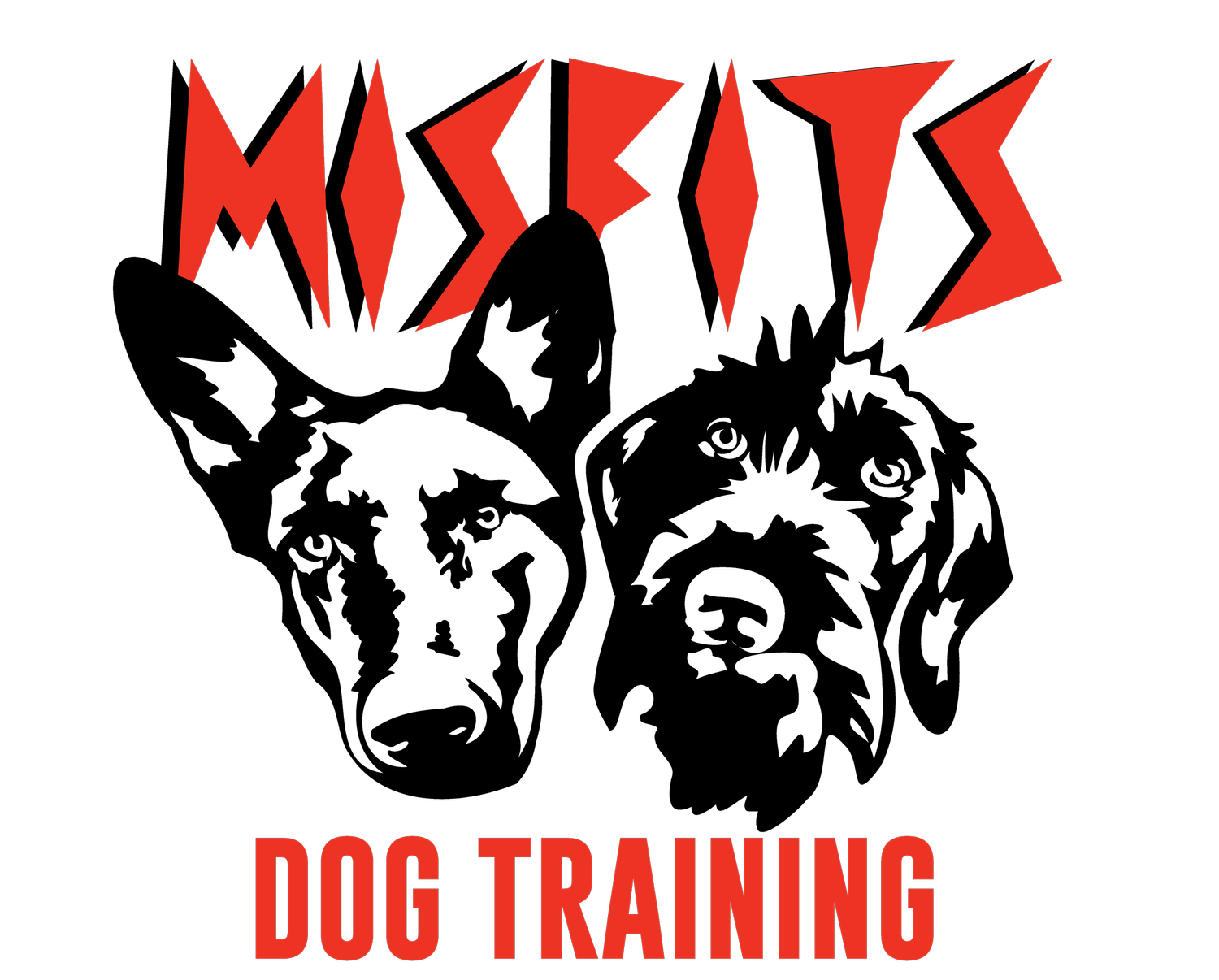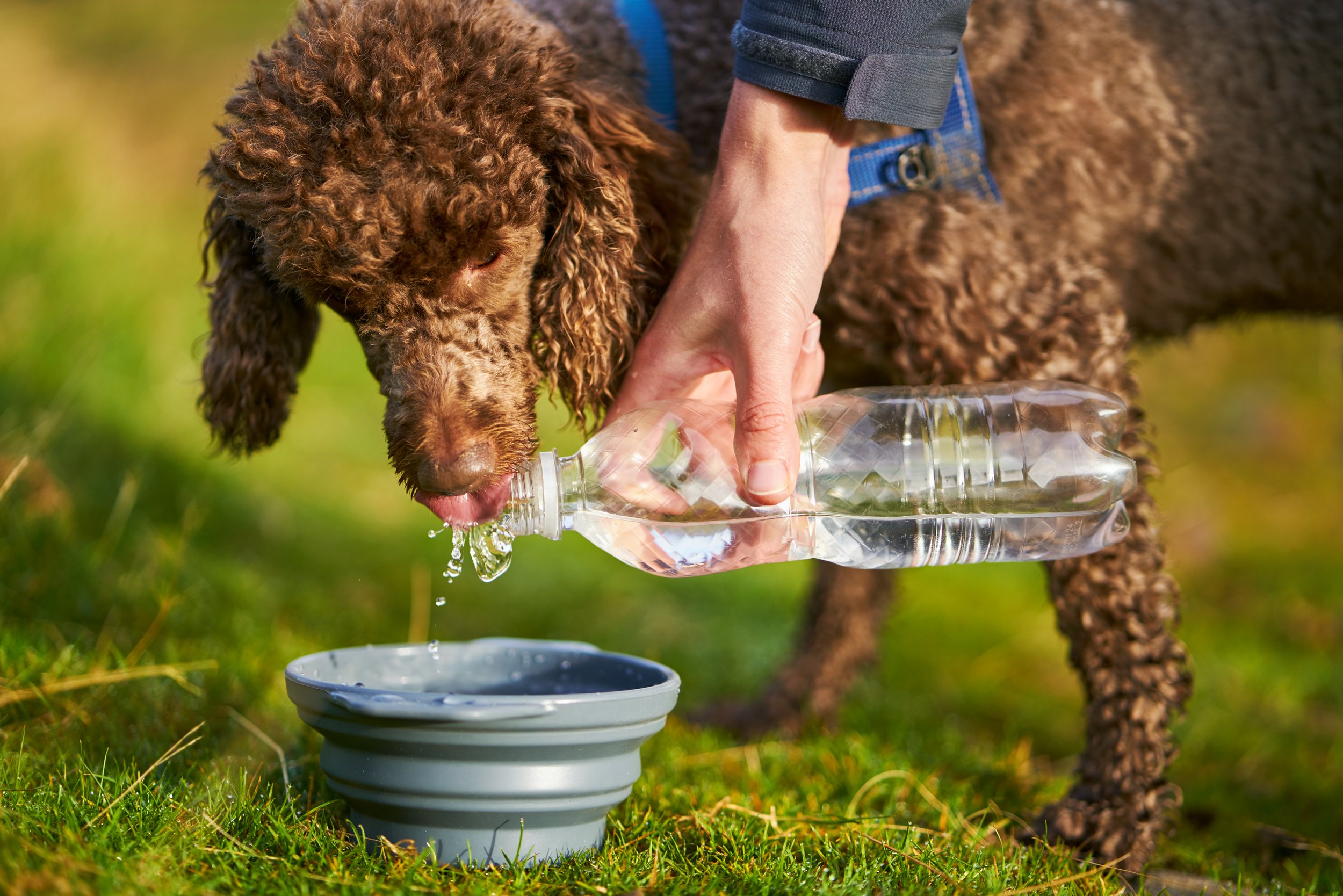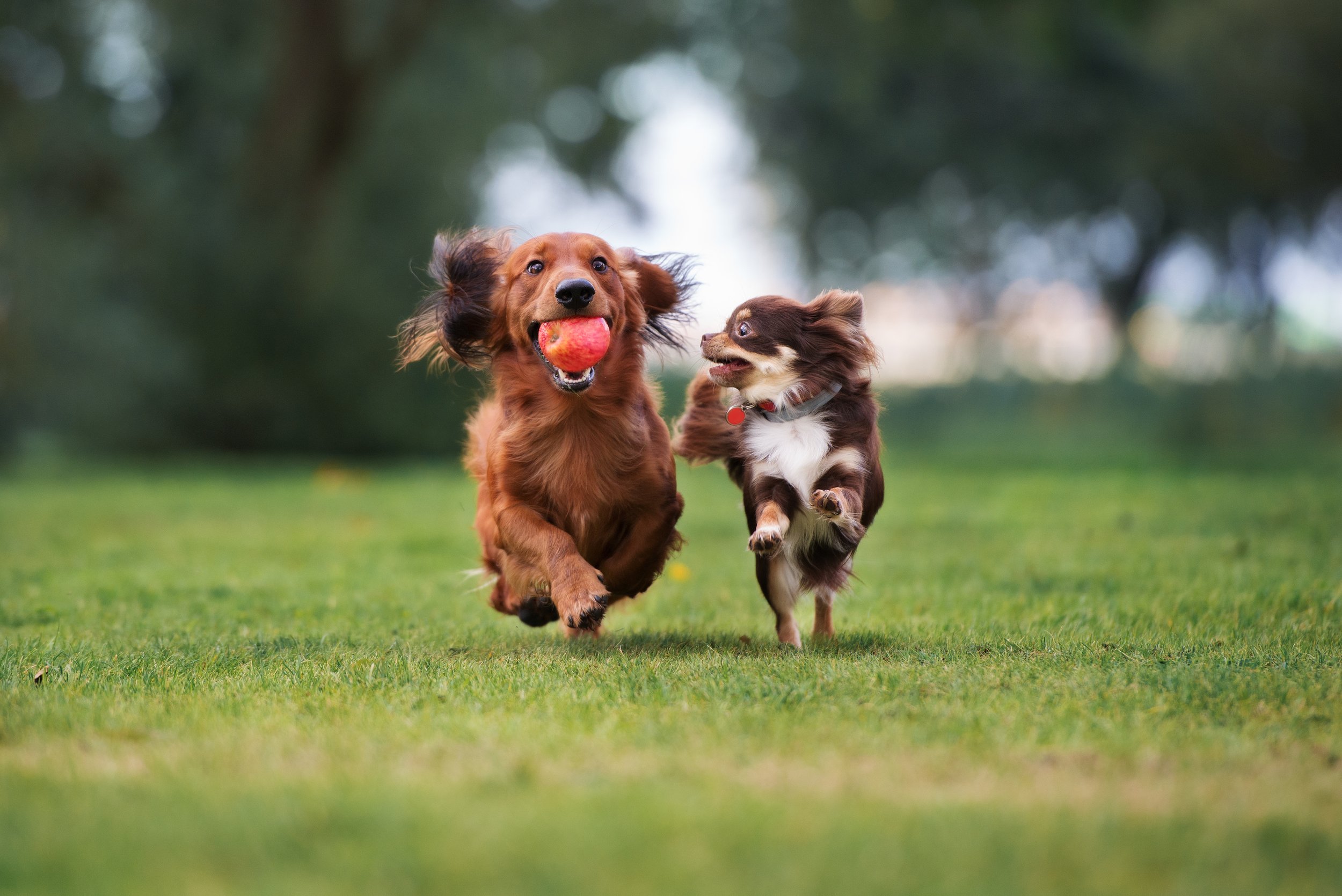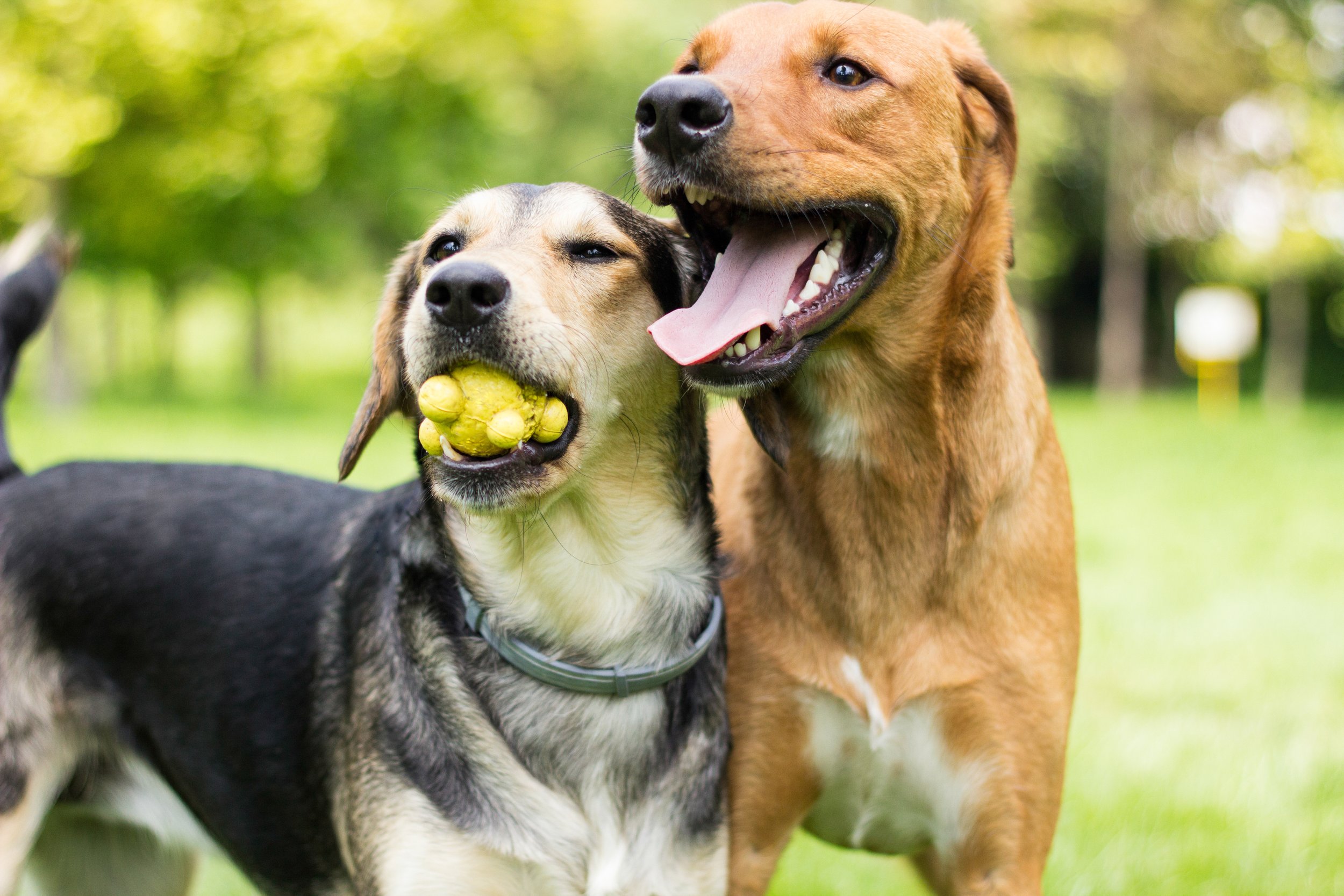Ah, summer in Colorado—the days are long, the sun is shining, and the outdoors are calling. It’s a time of year that both humans and dogs look forward to, but those warm temperatures and outdoor adventures come with a unique set of challenges. Keeping your dog safe during the summer months is crucial for their health and well-being. Whether you’re hitting the hiking trails around Castle Rock or just spending time in the backyard, these summer safety tips will help keep your dog cool, hydrated, and happy all season long.
Hydration Is Key: Keeping Your Dog Hydrated
Just like us, dogs need plenty of water to stay cool in the summer heat. Hydration plays a huge role in preventing heatstroke, dehydration, and other summer-related health issues. But keeping your dog properly hydrated is more than just filling up their water bowl once a day.
- Always Have Water Available: Make sure your dog has access to fresh, clean water at all times. If you’re going for a hike or spending time outdoors, bring a portable water bowl and enough water to last the entire outing. Remember, dogs can overheat quickly, and having water on hand can be a literal lifesaver.
- Add Ice Cubes for Extra Cooling: On particularly hot days, toss a few ice cubes into your dog’s water bowl. Not only does this help keep the water cooler for longer, but some dogs enjoy playing with the ice cubes—keeping them entertained and hydrated at the same time.
- Know the Signs of Dehydration: Recognizing dehydration in dogs is vital for early intervention. Signs include excessive panting, dry gums, sunken eyes, and lethargy. If your dog shows any of these symptoms, get them to a cool place immediately and offer water. Severe dehydration may require veterinary attention, so don’t hesitate to consult your vet if you’re concerned.
Hydration is the foundation of summer safety for your dog. By making sure they always have access to water, you can help them stay cool and avoid heat-related issues.
Be Mindful of Hot Pavement: Protecting Paws from Burns
One of the most overlooked dangers of summer is hot pavement. While your dog may be eager to trot along beside you on a walk, those asphalt and concrete surfaces can reach scorching temperatures—especially during the middle of the day. Protecting your dog’s paws from burns is just as important as keeping them cool.
- Test the Pavement: Before heading out for a walk, use the “five-second rule”—place the back of your hand on the pavement for five seconds. If it’s too hot for your hand, it’s too hot for your dog’s paws. Walking on hot pavement can cause painful burns and blisters, so be cautious.
- Walk During Cooler Times: Plan your walks for early morning or late evening when temperatures are lower, and the pavement has had a chance to cool down. This not only protects your dog’s paws but also helps prevent overheating.
- Use Protective Paw Gear: Consider investing in dog booties or paw wax for added protection. Booties can create a barrier between your dog’s paws and the hot pavement, while paw wax provides some protection from burns and irritation.
- Stick to Grass or Shaded Paths: When possible, choose grassy or dirt paths for walks instead of asphalt or concrete. Shaded areas are also better for keeping your dog cool and comfortable.
Keeping your dog’s paws safe from burns will ensure that summer walks remain enjoyable for both of you.
Preventing Heatstroke: Recognizing the Signs and Taking Action
Heatstroke is a serious risk for dogs during the summer months. Dogs don’t sweat like humans do, which means they have a harder time regulating their body temperature. Panting helps, but in extreme heat, it may not be enough. Understanding how to prevent heatstroke and recognizing the signs can make all the difference in keeping your dog safe.
- Avoid High Temperatures: Limit outdoor activities during the hottest part of the day, typically between 10 a.m. and 4 p.m. If you need to be outside with your dog, make sure they have access to shade and water, and take breaks in cool areas as often as possible.
- Never Leave Your Dog in a Parked Car: This one cannot be stressed enough. Even with the windows cracked, the temperature inside a parked car can skyrocket in just minutes. Leaving your dog in a hot car, even for a short time, can be deadly. If you can’t bring your dog inside with you, leave them at home where it’s safe.
- Know the Symptoms of Heatstroke: Early signs of heatstroke include excessive panting, drooling, red gums, rapid heartbeat, and lethargy. As heatstroke progresses, your dog may experience vomiting, diarrhea, and even collapse. If you suspect your dog is suffering from heatstroke, move them to a cooler place immediately, offer water, and contact your veterinarian for further instructions.
- Cool Your Dog Down Safely: If your dog is overheated, you can cool them down by placing cool (not cold) wet towels on their body, focusing on areas like their neck, armpits, and groin. You can also run cool water over their paws. Avoid using ice-cold water, as it can constrict blood vessels and make it harder for your dog’s body to cool down.
By taking preventive measures and knowing the warning signs of heatstroke, you can help protect your dog from this life-threatening condition.
Summer Fun with Safety in Mind: Outdoor Activities and Precautions
Summertime means outdoor adventures, and Colorado has no shortage of opportunities for fun with your dog. From hiking trails to lakes, there’s plenty to explore. However, it’s important to keep safety in mind during these activities to ensure a fun and hazard-free summer.
- Swimming Safety: Whether you’re at a lake or your backyard pool, swimming can be a fantastic way for your dog to cool down. However, not all dogs are natural swimmers. Always supervise your dog around water, and consider using a doggie life jacket if you’re at a lake or river with strong currents. After swimming, rinse your dog off to remove chlorine, salt, or other potentially harmful substances from their coat.
- Watch Out for Wildlife: Colorado is home to plenty of wildlife, from rattlesnakes to bears. Keep your dog on a leash in areas where wildlife encounters are possible, and be aware of your surroundings. Snakes are particularly active during the summer, so watch where your dog is sniffing or walking.
- Pack a Doggy First Aid Kit: Accidents happen, especially when you’re out adventuring. A dog-specific first aid kit can be a lifesaver in case of cuts, scrapes, or other injuries. Include items like bandages, antiseptic wipes, tweezers, and any medications your dog may need.
- Keep Bugs at Bay: Summer is also the season for bugs like ticks, fleas, and mosquitoes. Make sure your dog is up-to-date on their flea and tick prevention, and consider using a dog-safe insect repellent if you’re going to be in a particularly buggy area. Regularly check your dog’s coat for ticks after spending time outdoors.
By taking a few extra precautions, you can enjoy all that summer has to offer with your dog while keeping them safe and healthy.
Grooming for the Summer: Maintaining a Cool Coat
Proper grooming is another essential part of keeping your dog comfortable during the summer months. A well-maintained coat can help regulate your dog’s body temperature and protect them from sunburn.
- Regular Brushing: Regular brushing helps remove loose fur and prevent matting, which can trap heat and make your dog feel hotter. This is especially important for double-coated breeds like Golden Retrievers and Huskies. Even though it might be tempting, avoid shaving these breeds—their coat actually helps regulate body temperature and protect their skin from the sun.
- Keep an Eye on Coat Length: For dogs with long hair, trimming (not shaving) can help keep them cooler. Just be careful not to trim too close to the skin, as this can increase the risk of sunburn.
- Protect Against Sunburn: Yes, dogs can get sunburned! Short-haired breeds, light-colored dogs, and dogs with pink skin are particularly susceptible to sunburn. Apply dog-safe sunscreen to exposed areas like their nose, ears, and belly before spending time outside.
- Consider Professional Grooming: If you’re unsure about the best grooming routine for your dog during the summer, consider taking them to a professional groomer. A groomer can help manage your dog’s coat in a way that keeps them comfortable and cool without compromising their natural protection.
By staying on top of grooming, you can help your dog beat the heat while keeping their skin and coat healthy.
When in Doubt, Seek Professional Advice
While these tips can help you navigate the challenges of summer with your dog, sometimes it’s best to consult with a professional. If you’re ever unsure about your dog’s health or safety, or if you’re dealing with a particularly stubborn issue, don’t hesitate to reach out to your veterinarian or a certified dog trainer.
At Misfits Dog Training, we understand that every dog is unique, and we’re here to provide personalized advice and training tailored to your dog’s needs. Whether it’s learning how to handle summer adventures or addressing behavioral issues, we’ve got you covered.
Contact Misfits Dog Training today at (719) 465-9919 for expert guidance and training to keep your dog safe and happy all year round.
Frequently Asked Questions
Q. How much water should my dog drink during the summer?
As a general rule, dogs should drink about one ounce of water per pound of body weight per day. However, during the summer months, they may need more, especially if they’re active or spending time outdoors. Always ensure your dog has access to fresh water, and monitor their water intake to prevent dehydration.
Q. What are the best ways to keep my dog cool outdoors?
To keep your dog cool outdoors, provide shade, ensure they have access to fresh water, and avoid the hottest parts of the day. Cooling mats, dog-safe popsicles, and kiddie pools can also help keep your dog comfortable. Opt for walks early in the morning or late in the evening when the temperatures are lower.
Q. Is it safe to shave my dog in the summer to keep them cool?
In most cases, shaving your dog is not recommended. Many dogs, particularly double-coated breeds, rely on their fur to regulate body temperature and protect against sunburn. Regular brushing and trimming can help, but consult with your vet or a professional groomer before shaving your dog to ensure it’s the right choice for their breed and coat type.





